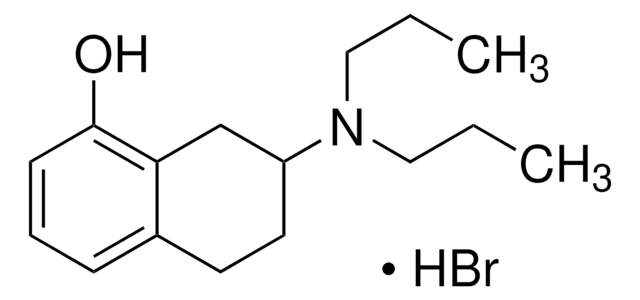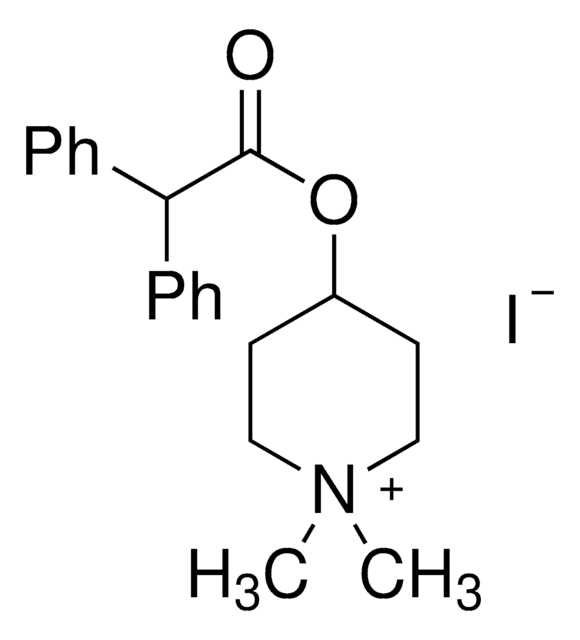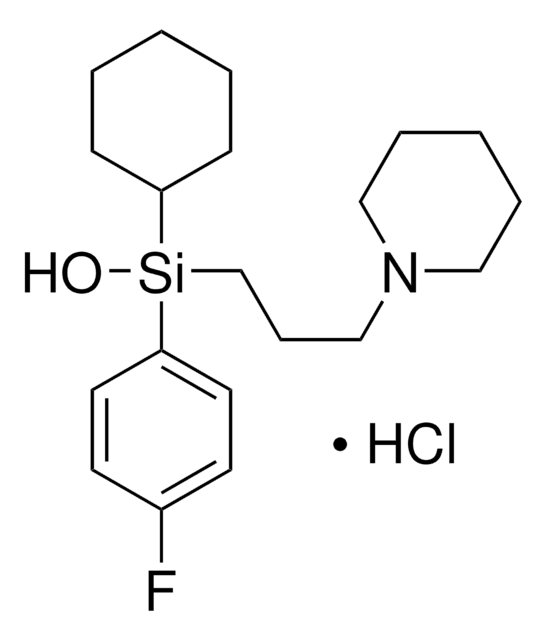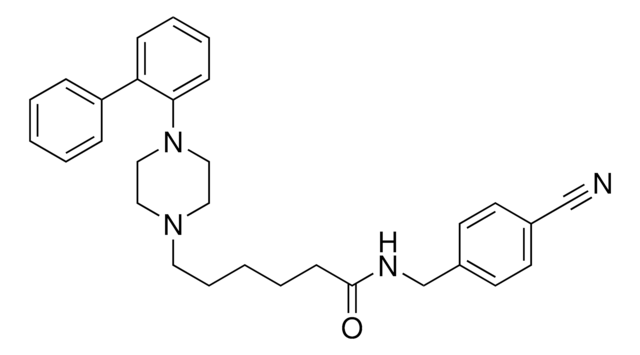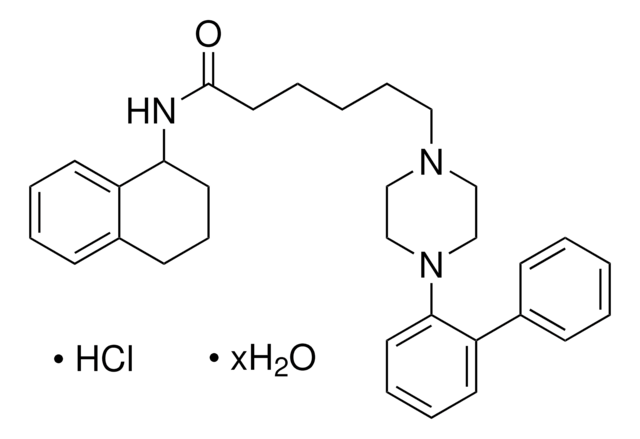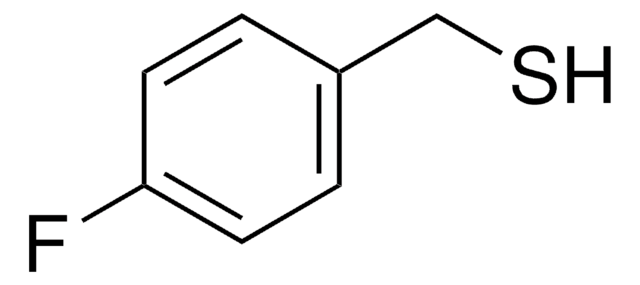Kluczowe dokumenty
SML0435
AF-DX 116
≥98% (HPLC)
Synonim(y):
11-[[2-[(Diethylamino)methyl]-1-piperidinyl]acetyl]-5,1 1-dihydro-6H-pyrido[2,3-b][1,4]benzodiazepin-6-one, Otenzepad
About This Item
Polecane produkty
Próba
≥98% (HPLC)
Formularz
powder
kontrola substancji
regulated under CDSA - not available from Sigma-Aldrich Canada
kolor
white to beige
rozpuszczalność
DMSO: 5 mg/mL (clear solution; warmed)
temp. przechowywania
room temp
ciąg SMILES
CCN(CC)CC1CCCCN1CC(=O)N2c3ccccc3C(=O)Nc4cccnc24
InChI
1S/C24H31N5O2/c1-3-27(4-2)16-18-10-7-8-15-28(18)17-22(30)29-21-13-6-5-11-19(21)24(31)26-20-12-9-14-25-23(20)29/h5-6,9,11-14,18H,3-4,7-8,10,15-17H2,1-2H3,(H,26,31)
Klucz InChI
UBRKDAVQCKZSPO-UHFFFAOYSA-N
Zastosowanie
Działania biochem./fizjol.
Cechy i korzyści
Hasło ostrzegawcze
Warning
Zwroty wskazujące rodzaj zagrożenia
Zwroty wskazujące środki ostrożności
Klasyfikacja zagrożeń
Acute Tox. 4 Oral
Kod klasy składowania
11 - Combustible Solids
Klasa zagrożenia wodnego (WGK)
WGK 3
Temperatura zapłonu (°F)
Not applicable
Temperatura zapłonu (°C)
Not applicable
Wybierz jedną z najnowszych wersji:
Certyfikaty analizy (CoA)
Nie widzisz odpowiedniej wersji?
Jeśli potrzebujesz konkretnej wersji, możesz wyszukać konkretny certyfikat według numeru partii lub serii.
Masz już ten produkt?
Dokumenty związane z niedawno zakupionymi produktami zostały zamieszczone w Bibliotece dokumentów.
Nasz zespół naukowców ma doświadczenie we wszystkich obszarach badań, w tym w naukach przyrodniczych, materiałoznawstwie, syntezie chemicznej, chromatografii, analityce i wielu innych dziedzinach.
Skontaktuj się z zespołem ds. pomocy technicznej
